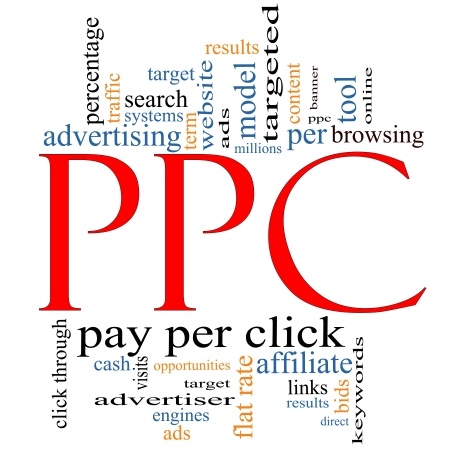Google AdWords and other similar pay-per-click (PPC) advertising platforms can be a great way to generate leads for your business. Unfortunately, many businesses jump into AdWords with little or no training. The result is often a huge waste of money. It’s interesting to note, however, that most of these businesses understand so little about AdWords that they aren’t even aware that they’ve got a problem.
We manage pay-per-click (PPC) campaigns for our clients and most of them are B2B companies that sell high ticket products and services. Their sales cycles can be lengthy. What they need from a B2B PPC campaign is not just impressions, clicks and website traffic. What they need are leads.
Here are the ten most common mistakes that we see companies make with their B2B PPC campaigns. These mistakes result in ineffective campaigns and waste thousands of marketing dollars. Note: most of these tips apply to any type PPC campaign, but some of these tips are specific to AdWords campaigns.
Mistake #1: Focusing on the wrong metrics.
Many companies focus on cost per click (CPC), clicks and impressions. For B2B companies, the two key metrics should be leads (AdWords calls these “conversions”) and cost per lead. We recommend focusing on cost per lead. That way, you can compare the cost per lead for PPC with the cost per lead for other marketing tactics and invest in the tactics that deliver the best results.
Mistake #2: Sending traffic only to your home page.
This is the most common (and costly) mistake that we see. Companies will have all of their ads linking to their home page. This generates website traffic, but your chances of generating leads are low.
Mistake #3: Linking ads to pages without a contact form.
If you want to generate leads and not just website traffic, you need to have people click through to a page that requires an action, such as filling out a web form (a landing page) so you can capture the visitor’s contact information (a lead). You can also direct traffic to a shopping cart or set up a proxy to capture phone calls as leads.
Mistake #4: Setting and forgetting.
Most PPC campaigns – especially AdWords – require regular attention. It’s very easy to waste a lot of money quickly with PPC if you don’t know what you’re doing. AdWords is complex. To master it, you need to live in it daily. Do yourself a favor and hire an expert to manage your AdWords account.
Mistake #5: Poor alignment between keywords, ad copy, and landing page copy.
Google likes to see clear alignment between your keywords, ads and landing pages. The keyword that you use to trigger your ad should appear in the ad. And the words that appear in your ad should appear on the landing page for that ad. Poor alignment results in a low Quality Score in AdWords. The lower your Quality Score, the higher your cost-per-click. A low Quality Score can prevent your ad from displaying altogether, or it can result in an ad not appearing much.
Mistake #6: Overusing broad match for keywords.
AdWords gives you several options for keywords: broad match, broad match modifier, phrase match, exact match and negative match. With broad match, Google gets very creative and will display your ad when users type in keywords that might surprise you. Let’s say that your keyword is “CRM software”. With broad match, your ad might appear when someone searches on the following keywords: free CRM software download; cheapest CRM software; open source CRM software. These keywords may send the wrong type of prospects to your website. And you’re paying for each click. It’s better to use one of the other keyword matching options along with ample use of negative keywords.
Mistake #7: Not using negative keywords.
 Once you start your campaign you’ll see the actual keywords that triggered your ad. As you see inappropriate keywords, you need to add them to your list of negative keywords. For example, if your ad is displaying when someone searches on “free CRM software” and your software isn’t free, you can add either “free” or “free CRM software” to the list of negative keywords. This will stop Google from displaying your ad with those keywords in the future. Reviewing keywords and adding negative keywords is an activity that should take place on a routine basis. It will save you money.
Once you start your campaign you’ll see the actual keywords that triggered your ad. As you see inappropriate keywords, you need to add them to your list of negative keywords. For example, if your ad is displaying when someone searches on “free CRM software” and your software isn’t free, you can add either “free” or “free CRM software” to the list of negative keywords. This will stop Google from displaying your ad with those keywords in the future. Reviewing keywords and adding negative keywords is an activity that should take place on a routine basis. It will save you money.
Mistake #8: Using too many different keyword ideas in one ad group.
We often see long lists of keywords in a single ad group. This will work against you because of the alignment that Google likes to see between keywords, ads and landing pages. Try to limit your keywords to ten or less per ad group. And make the keywords very similar. For example: CRM software, CRM solutions, CRM applications, CRM systems.
Mistake #9: Co-mingling search campaigns and display campaigns in the same ad groups.
It’s best to create separate campaigns for search ads from campaigns for display ads. The way that you manage display ads is different than search ads. There are going to be many more impressions with display ads, and even though the click-through rates (CTR) are much lower with display than with search, typically display ads have a higher cost per lead. Therefore, it’s useful to have the ability to control the budget for display separately from search. Having both types of ads in the same ad group make it difficult to manage.
Mistake #10: Using the auto-placement feature with display ads and not weeding out non-relevant sites.
If you use auto placement with display, be prepared to weed out the sites that Google places the ads on. Google will place the ads on plenty of non-relevant sites. You need to routinely tag these sites so Google will not run your ads on them again. We recommend using the Topics feature to help Google focus where the ads are displayed, but even with this setting you want to spend quality time reviewing and blocking sites that are not relevant. We’ve seen companies waste thousands of dollars in a single month by not paying attention to this.
If you’d like to get started with PPC advertising or if you’d like to improve your PPC performance, contact Espresso.
